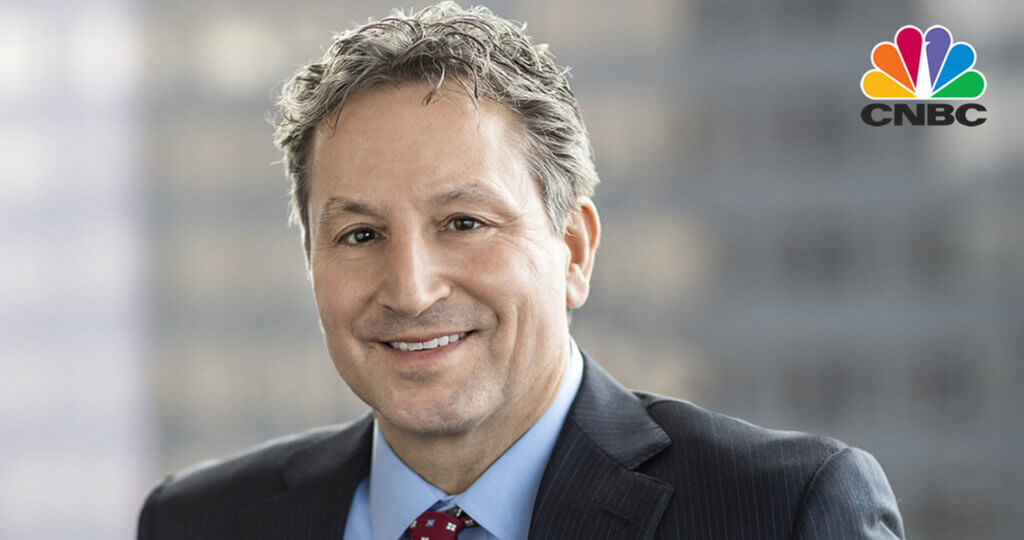Oakmark International Fund – Investor Class
Average Annual Total Returns 03/31/24
Since Inception 09/30/92 8.55%
10-year 3.27%
5-year 5.51%
1-year 4.42%
3-month 0.11%
Expense Ratio: 1.05%
Oakmark International Small Cap Fund – Investor Class
Average Annual Total Returns 03/31/24
Since Inception 11/01/95 8.62%
10-year 4.65%
5-year 8.45%
1-year 12.74%
3-month 0.51%
Expense Ratio: 1.34%
Expense ratios are from the Fund’s most recent prospectus dated January 28, 2024; actual expenses may vary.
Past performance is no guarantee of future results. The performance data quoted represents past performance. Current performance may be lower or higher than the performance data quoted. The investment return and principal value vary so that an investor’s shares when redeemed may be worth more or less than the original cost. The To obtain the most recent month-end performance data, view it here.
By David Herro, Portfolio Manager
Fellow Shareholders,
After a relatively strong 2023, both the Oakmark International Fund and Oakmark International Small Cap Fund (collectively, the “Funds”) had positive performance in the first quarter, but just barely—both earned less than 1% and underperformed their respective bogeys (see individual Fund letters for more details). Despite the muted quarter, we remain very optimistic about the future given the extremely attractive valuations at which these international portfolios are selling. As an example, both Funds are trading at around 53 cents on the dollar (at 100 cents on the dollar, the portfolios would be fully valued by our measurement), which – outside of extremes – is near the low end of their historical ranges. These levels are even more meaningful as we expect acceptable growth in earnings and value over the next one to two years.
Momentum versus value
Granolas! The Mag 7! Japan! Crypto! Today, the weight of money is flocking to a few, narrow bands of asset classes. As the money flows TO these areas, it flows OUT of other places. In the last quarter, Japan was the recipient of investor attention as the market rose approximately 20% in local currency. Toyota Motor and Tokyo Electron were two of the top five performing stocks in the MSCI EAFE Index this past quarter with gains of 37.61% and 46.77%, respectively. We know all about the Fab 5, formerly the Mag 7 before dropping Apple and Tesla, and how they continue to gain attention and flows. Now, there is a European equivalent called the Granolas, which includes weight reduction drug champ Novo Nordisk and semiconductor equipment manufacturer ASML Holding as well as a handful of other European growth companies. And, of course, there is bitcoin, which appreciated around 65% for the quarter.
As long-term investors who make decisions based on the underlying intrinsic value of an asset based on its balance sheet and cash generation, we are not disappointed that we tend to underperform in momentum-driven markets. Importantly, as risk minimization to us is defined as protecting capital and achieving long-term returns versus our asset class, we believe that it is extremely risky to purchase stocks that have markedly stretched valuations just because it is where the flow of money is moving. Many of the themes these stocks move on are real (e.g., innovative drug treatments, artificial intelligence, the demand for chips, etc.), but we must ultimately price the businesses based on estimated earning power and cash generation and then compare this to the prices at which the businesses sell. If there is not a fundamental value proposition, we won’t chase momentum as the only chasing we do is for value.
The Japanese situation
As mentioned, the Japanese market was the world’s best performing developed market last quarter, and we are measurably underweight in the country for both Funds. This underweight has had a negative impact on returns from an absolute and relative perspective. During the last quarter, the Japanese market also set new highs, surpassing the past high-water mark that was set way back in December of 1989. There is a great deal of enthusiasm surrounding improved corporate governance, better earnings and the fact that Japan isn’t China. (There is a lot of money moving from China to Japan.) Though we share the enthusiasm surrounding this second effort to improve corporate governance (first attempt was in Prime Minister Shinzo Abe’s “third arrow” in 2012), our belief is that the Japanese stock market has been priced for a massive improvement in corporate performance that has yet to materialize. One way to visualize this is through an analysis of Japanese company profitability as measured by return on equity (ROE). The last time the market peaked, in 1989, we saw an average ROE of the TOPIX Index of around 7.5%. Today, the expected ROE is just 8.73%, which compares to the S&P 500 Index’s of 18.6% and the Stoxx Europe 600 of just under 13%. And note that several Japanese export-oriented companies have experienced exceptional earnings growth (Toyota in particular) due to the collapse of the yen. Despite Europe trading at a significantly higher ROE than Japan, its estimated 2024 P/E ratio is 13.7x versus Japan’s 16x, demonstrating a greater value proposition. We are enthused about improving prospects in Japan and continue to spend time on the ground looking for attractive investments, but finding widespread value is challenging, thus our current underweight.
Closing
Though the last three months delivered disappointing returns, we believe our international Funds represent exceptional value as both are priced well below their respective indexes via conventional valuation metrics but offer significantly higher profitability as demonstrated by the ROE of each portfolio. We will continue our search for value and stay disciplined by avoiding high valuations that we believe to be fundamentally unwarranted.
| Portfolio Statistics | Oakmark International Fund | Oakmark International Small Cap Fund | MSCI World ex USA Index2 | S&P 500 Index2 |
|---|---|---|---|---|
| Price/earnings1 | 9.4 | 9.6 | 15.8 | 24.7 |
| Price/cash flow1 | 7.0 | 8.7 | 10.1 | 29.2 |
| Price/book1 | 1.2 | 1.3 | 1.9 | 4.3 |
| Dividend Yield1 | 3.3% | 3.5% | 2.9% | 1.4% |
| ROE | 14.5% | 15.6% | 12.3% | 17.5% |
1Projected for portfolio, TTM for benchmark
2Benchmark characteristics are sourced directly from the index provider and the underlying calculation methodology differs from the methodology used by Harris to calculate for the portfolio characteristics.
Thank you for your continued support.
OPINION PIECE. PLEASE SEE ENDNOTES FOR IMPORTANT DISCLOSURES.
As of 03/31/2024, none of the securities mentioned above are held in either the Oakmark International Fund nor the Oakmark International Small Cap Fund.. Portfolio holdings are subject to change without notice and are not intended as recommendations of individual stocks.
Access the full list of holdings for the Oakmark International Fund here.
Access the full list of holdings for the Oakmark International Small Cap Fund here.
The information, data, analyses, and opinions presented herein (including current investment themes, the portfolio managers’ research and investment process, and portfolio characteristics) are for informational purposes only and represent the investments and views of the portfolio managers and Harris Associates L.P. as of the date written and are subject to change and may change based on market and other conditions and without notice. This content is not a recommendation of or an offer to buy or sell a security and is not warranted to be correct, complete or accurate.
Certain comments herein are based on current expectations and are considered “forward-looking statements.” These forward looking statements reflect assumptions and analyses made by the portfolio managers and Harris Associates L.P. based on their experience and perception of historical trends, current conditions, expected future developments, and other factors they believe are relevant. Actual future results are subject to a number of investment and other risks and may prove to be different from expectations. Readers are cautioned not to place undue reliance on the forward-looking statements.
The price to earnings ratio (“P/E”) compares a company’s current share price to its per-share earnings. It may also be known as the “price multiple” or “earnings multiple”, and gives a general indication of how expensive or cheap a stock is. Investors should not base investment decisions on any single attribute or characteristic data point.
Price-to-cash flow is defined as a stock’s capitalization divided by its cash flow for the latest fiscal year.
The Price to Book Ratio is a stock’s capitalization divided by its book value.
Dividend Yield is a stock’s expected annual dividend divided by the stock’s price at the indicated date, expressed as a percentage.
ROE refers to return on equity and measures profitability as a percentage of the money shareholders have invested.
TTM stands for twelve trailing months
The MSCI World ex USA Index (Net) is a free float-adjusted, market capitalization-weighted index that is designed to measure international developed market equity performance, excluding the U.S. The index covers approximately 85% of the free float-adjusted market capitalization in each country. This benchmark calculates reinvested dividends net of withholding taxes. This index is unmanaged and investors cannot invest directly in this index.
The MSCI EAFE Index (Net) is designed to represent the performance of large and mid-cap securities across 21 Developed Markets countries in Europe, Australasia and the Far East, excluding the U.S. and Canada. The Index covers approximately 85% of the free float-adjusted market capitalization in each of the 21 countries. This benchmark calculates reinvested dividends net of withholding taxes. This index is unmanaged and investors cannot invest directly in this index.
On occasion, Harris may determine, based on its analysis of a particular multi-national issuer, that a country classification different from MSCI best reflects the issuer’s country of investment risk. In these instances, reports with country weights and performance attribution will differ from reports using MSCI classifications. Harris uses its own country classifications in its reporting processes, and these classifications are reflected in the included materials.
The S&P 500 Total Return Index is a float-adjusted, capitalization-weighted index of 500 U.S. large-capitalization stocks representing all major industries. It is a widely recognized index of broad, U.S. equity market performance. Returns reflect the reinvestment of dividends. This index is unmanaged and investors cannot invest directly in this index.
The TOPIX, also known as the Tokyo Stock Price Index, is a capitalization-weighted index of all companies listed on the First Section of the Tokyo Stock Exchange. This index is unmanaged and investors cannot invest directly in this index
The STOXX Europe 600 is a stock index of European stocks designed by STOXX Ltd. This index has a fixed number of 600 components representing large, mid and small capitalization companies among 17 European countries, covering approximately 90% of the free-float market capitalization of the European stock market. This index is unmanaged and investors cannot invest directly in this index.
The funds’ portfolios tend to be invested in a relatively small number of stocks. As a result, the appreciation or depreciation of any one security held by the Fund will have a greater impact on the Funds’ net asset value than it would if the Fund invested in a larger number of securities. Although that strategy has the potential to generate attractive returns over time, it also increases the Funds’ volatility.
Investing in foreign securities presents risks that in some ways may be greater than U.S. investments. Those risks include: currency fluctuation; different regulation, accounting standards, trading practices and levels of available information; generally higher transaction costs; and political risks.
All information provided is as of 03/31/2024 unless otherwise specified.




